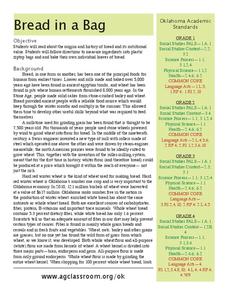Curated OER
Which One is an Insect?
In this science activity, students categorize 18 words as either insects or not insects. Students write the words in a two-column chart under the correct category.
Curated OER
Body Parts
For this science worksheet, students identify the placement of the main parts of the human body. Students begin by cutting out the head and torso pieces and pasting them and the smaller body parts in the proper location.
Curated OER
Problems with Measures
Yards or inches? Understanding measurements has a lot to do with units, so give scholars some scenarios and have them choose the appropriate unit. There are six labeled images here requiring weight, distance, length, and capacity. They...
Curated OER
The Solar System - A Review
Students analyze their knowledge about the solar system. In this solar system review lesson, students look at a picture of the solar system on the SMART Board, name them in order, and are able to identify the sun as the center. They...
Curated OER
Dirt Babies
Dirt babies are an excellent way to show young botanists the plant life cycle. They explore the functions and industry behind grasses before growing some of their own. Use the informational text here and consider implementing some...
Curated OER
Combining Clouds and Art in the Classroom
Get your head in the clouds before teaching cloud types to your mini-meteorologists. The lesson opens with a beautiful PowerPoint presentation of clouds portrayed in different artists' paintings. After viewing artistic renditions,...
Curated OER
Bouncing Bubbles
Students complete a variety of activities exploring the joys and science of bubbles. They listen to the book "Bubbles Bubbles" by Mercer Mayer, create a bubble picture using Kid Pix, and explore blowing bubbles. Students experiment...
Curated OER
Bread in a Bag
Could the history of bread really be interesting? Yes, it could! An informational text gives scholars wheat production background from 8,000 years ago, discussing different types of bread and the current industry in Oklahoma. Learners...
Curated OER
The Nine Planets
A solid lesson plan on teaching the nine planets in our solar system is here for you. In it, young scientists learn the correct order of the planets, and they choose one of the planets to do a research report on. They must come up with...
Curated OER
Who Am I?
A colorul word search on Australian birds is here for you. The pictures that accompany each of the birds are accurate and life-like. There are 16 birds that are depicted, and learners must match up each picture with the name of the bird...
Curated OER
Who Am I?
Birds and ducks are the stars of this colorful word search. In it, learners identify 16 different species of birds and ducks. There are colorful and accurate pictures of each of the birds. Pupils must match up the picture with...
Curated OER
Seashore Invertebrates
A colorful word search that features seashore invertebrates is here for you. Each of the 20 creatures has an accurate and colorful picture associated with it. There is an answer key as well. A good resource to supplement any unit of...
Curated OER
Am I Taller than an Antelope
Students investigate biology by examining body sizes of different animals. In this antelope measurement lesson, students research the physicality of Antelopes and other large animals that inhabit Earth. Students create a model Antelope...
Curated OER
Earth's Water: A drop in your cup
Students complete activities where they observe the amount of freshwater in the world as a fraction of the actual amount of water using different mixtures. In this freshwater lesson plan, students brainstorm on how to preserve freshwater.
Curated OER
The Very Hungry Caterpillar
Here is a good lesson on butterflies and caterpillars. After listening to The Very Hungry Caterpillar, young learners put cards that depict the life cycle of a butterfly in the correct order. There are some good ideas for center...
Curated OER
Old Lady That Swallowed a Fly
Youngsters listen to the story, "There Was an Old Lady Who Swallowed a Fly." After discussing the story, going over new vocabulary, and repeating the rhymes in the story, they study the parts of a fly. They finish by creating a fly on...

















